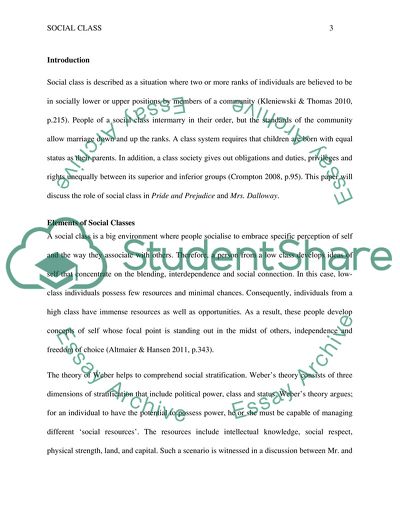Cite this document
(What Role Does Social Class Play in Pride and Prejudice and Mrs Book Report/Review Example | Topics and Well Written Essays - 3250 words, n.d.)
What Role Does Social Class Play in Pride and Prejudice and Mrs Book Report/Review Example | Topics and Well Written Essays - 3250 words. https://studentshare.org/sociology/1875516-what-role-does-social-class-play-in-pride-and-prejudice-and-mrs-dalloway
What Role Does Social Class Play in Pride and Prejudice and Mrs Book Report/Review Example | Topics and Well Written Essays - 3250 words. https://studentshare.org/sociology/1875516-what-role-does-social-class-play-in-pride-and-prejudice-and-mrs-dalloway
(What Role Does Social Class Play in Pride and Prejudice and Mrs Book Report/Review Example | Topics and Well Written Essays - 3250 Words)
What Role Does Social Class Play in Pride and Prejudice and Mrs Book Report/Review Example | Topics and Well Written Essays - 3250 Words. https://studentshare.org/sociology/1875516-what-role-does-social-class-play-in-pride-and-prejudice-and-mrs-dalloway.
What Role Does Social Class Play in Pride and Prejudice and Mrs Book Report/Review Example | Topics and Well Written Essays - 3250 Words. https://studentshare.org/sociology/1875516-what-role-does-social-class-play-in-pride-and-prejudice-and-mrs-dalloway.
“What Role Does Social Class Play in Pride and Prejudice and Mrs Book Report/Review Example | Topics and Well Written Essays - 3250 Words”. https://studentshare.org/sociology/1875516-what-role-does-social-class-play-in-pride-and-prejudice-and-mrs-dalloway.


